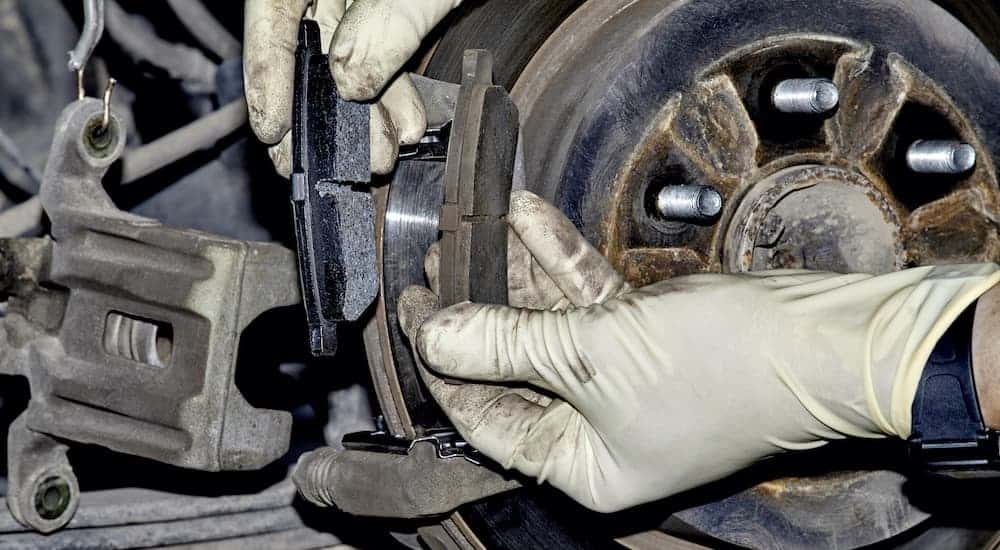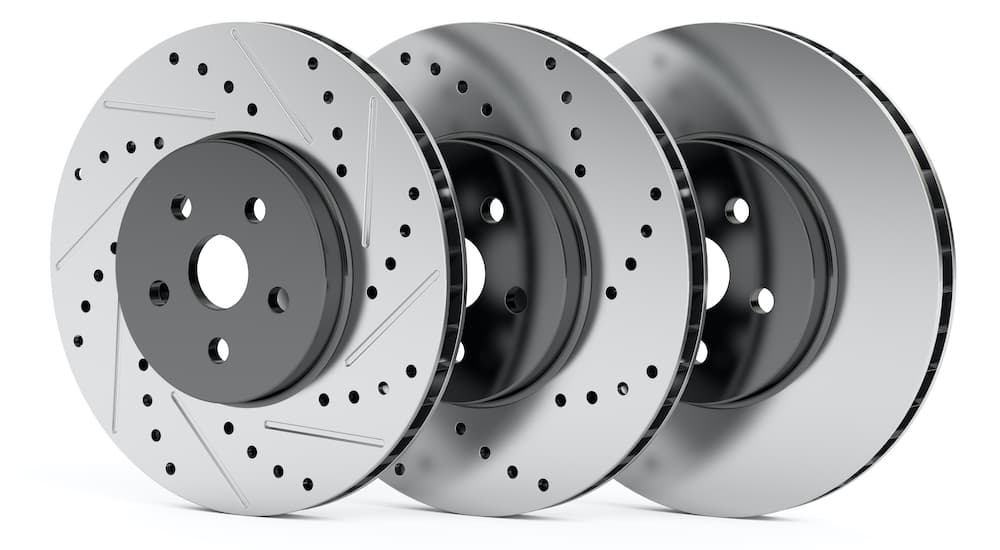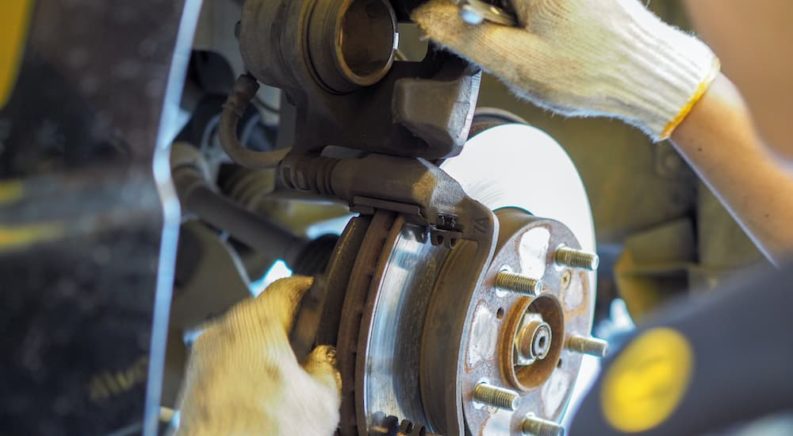Not every carmaker makes their cars exactly the same. This means that not every vehicle starts and stops the same, and not every vehicle has the same brake quality or longevity or uses the same kind of component design. For Nissan vehicles in particular, the brake designs vary per make and model, which can change how the vehicle handles on the road, especially in busy metropolitan areas. No matter where you live, you may need to regularly get a checkup from a Nissan service center to keep your vehicle running properly. This is especially true in busy urban areas. The inner-city hustle and bustle can wear down your brakes very quickly, and there are a few things you should know about Nissan brakes when driving in crowded stop-and-go areas.
Different Nissan, Different Brakes
The first thing you need to know is that not every vehicle is made the same. What this means is that not every vehicle––even made by the same auto manufacturer––uses the same sort of parts. You can’t just interchange components from one Ford to another, or from one Honda to the next, or from Nissan to another Nissan.
Not only are different vehicles made differently, but each component varies wildly based on the vehicle classification. For instance, sedans have a completely different setup than sports cars, just the same as sports cars have a completely different setup from SUVs, just the same as SUVs have a completely different setup from pickup trucks.
Even when some vehicles are built on the same base, such as the Nissan Armada and the Nissan Titan, there are still differences in how they operate due to their differing roles. A perfect example is that even while sharing the same base, the original brake pad designs for the Armada and Titan are still different depending on the model year. For instance, you’ll notice that the front pads for the Titan contain three thermal slots while the front pads for the Armada contain only one slot. You’ll also notice that the pad chamfer is different between the two, along with the surface shape, backing plate, and friction compound.
In essence, just because some vehicles are built on the same platform doesn’t mean that they have interchangeable parts. You will need to make sure that when the time comes to replace the brakes, you replace the brakes with the right kind of pad for the right kind of vehicle.
Different Kind of Brakes for Different Kinds of Driving
When you buy a car, you might assume that you just get OEM replacement parts for it and call it a day, but in reality, there’s a bit more to it than that because not all OEM replacement parts are the same. There are different categories of brakes and different types of brake pad materials that affect the wear and tear on your vehicle, along with how well the vehicle performs when it comes to stopping.
For instance, did you know that different brake pad material is better for city driving than certain other kinds of material?
Different material changes how effective the brakes are depending on how long the car has been driving, the weather conditions, and whether the vehicle is high performance or not. There are also differences between generic brake kits, OEM kits, sport kits, and performance kits. If you’re typically driving in the city, then you’re not going to need performance brakes unless you have a performance sports car that you typically take to the track or drive at high speeds on open roads.
For urban driving, you’re likely going to want to go with kits or replacements fine-tuned for the kind of weather you typically drive in.

What’s Best for the City?
If you’re a frequent urban driver, then you know how the stop and go traffic is in the concrete jungle, where you have to deal with non-stop traffic lights, pedestrian crossing, wild drivers, and sometimes harsh weather.
Believe it or not, some brakes are better suited for city driving than others. As mentioned, there are typically several types of brakes:
- Organic pads
- Ceramic pads
- Metallic pads
- Semi-metallic pads
Non-asbestos organic brakes are what you typically find on most vehicles. They’re the basic brakes that come with most vehicles. If you’re driving a Nissan sedan, crossover, or SUV, you probably already have these equipped.
While ceramic pads are slightly more expensive than organic pads, they do provide better grip, quieter performance, and offer better longevity for the stop-and-go lifestyle of city driving. These are great pads for most Nissan vehicles, and during the intervals where the brake pads need to be replaced, you might consider OEM ceramic pads for your Nissan if the dealership has them available. The downside to ceramic pads is that they are more expensive than organic brakes but provide better performance.
If you drive a larger vehicle like a Nissan Armada or Titan XD, metallic or semi-metallic pads might work out well if you regularly tow or trailer in the city.
However, if the majority of your time is just spent navigating lanes, moving through cross-sections, and trying to avoid red lights, you might consider ceramic pads.

Drilled vs Smooth Rotors?
In addition to wear, tear, and longevity, another thing to consider is how well the brakes perform in different weather and temperature levels. If you’re typically driving in the city with a Nissan––of any type––and the weather is usually warm or hot, then you don’t have to worry much about the issue of drilled brake rotors or smooth brake rotors. You probably should just stick with the OEM rotors and call it a day.
However, suppose you frequently drive in a city where you sometimes encounter extreme weather conditions, or lots of rainy weather, or heavy snowfall. In that case, you may need to consider a brake kit that addresses not only the material (i.e., ceramic, metallic, or organic) but also the rotor type.
Cross-drilled rotor patterns are actually quite useful for situations where you’re trudging through water or dirty streets, as the holes ensure that there’s no build-up on the rotors, and in turn, help increase the friction to improve braking. This can also help increase the longevity of the brake pads.
Smooth or blank brake rotors are still quite efficient for most purposes, but if you’re consistently driving your Nissan through the rain, muddy streets, or snowy roads, it wouldn’t be a bad idea to consider cross-drilled rotors for your next brake kit replacement.
Are Performance or Sports Brakes Good for the City?
Let’s say you have a Nissan Z series or a GT-R, and you love it to death. How effective is it in driving in the city, though? If you’re not a speedster and you typically drive the vehicle to show off, performance or sports brakes likely aren’t going to be the most effective way to travel around the city.
Sports or performance brake kits are designed specifically for the track, and if you have a Nissan outfitted with OEM performance brakes, then you’re not going to get the most effective use out of them in day-to-day city driving. Maybe if you live in the mountains or rural areas where there are lots of wide-open roads to make use of, but in the everyday hustle and bustle, performance brakes just don’t hold up for the simple reason that they’re designed to be more effective under high strain.
Essentially performance or sports brake pads are designed to handle a lot of extreme heat caused by the friction applied to the rotors, which is dissipated with the help of cross-drilled or slotted rotors. If you’re not putting your vehicle through the sort of strain required of a race track, then there’s no reason to dump the extra money into sports or performance brake kits, especially if the most aggressive driving you’re going to be doing is from your kid’s after-school program to the grocery store during rush hour.

